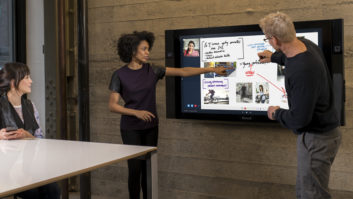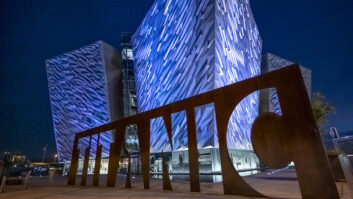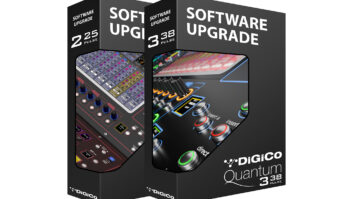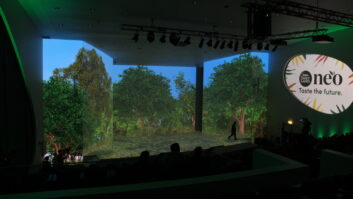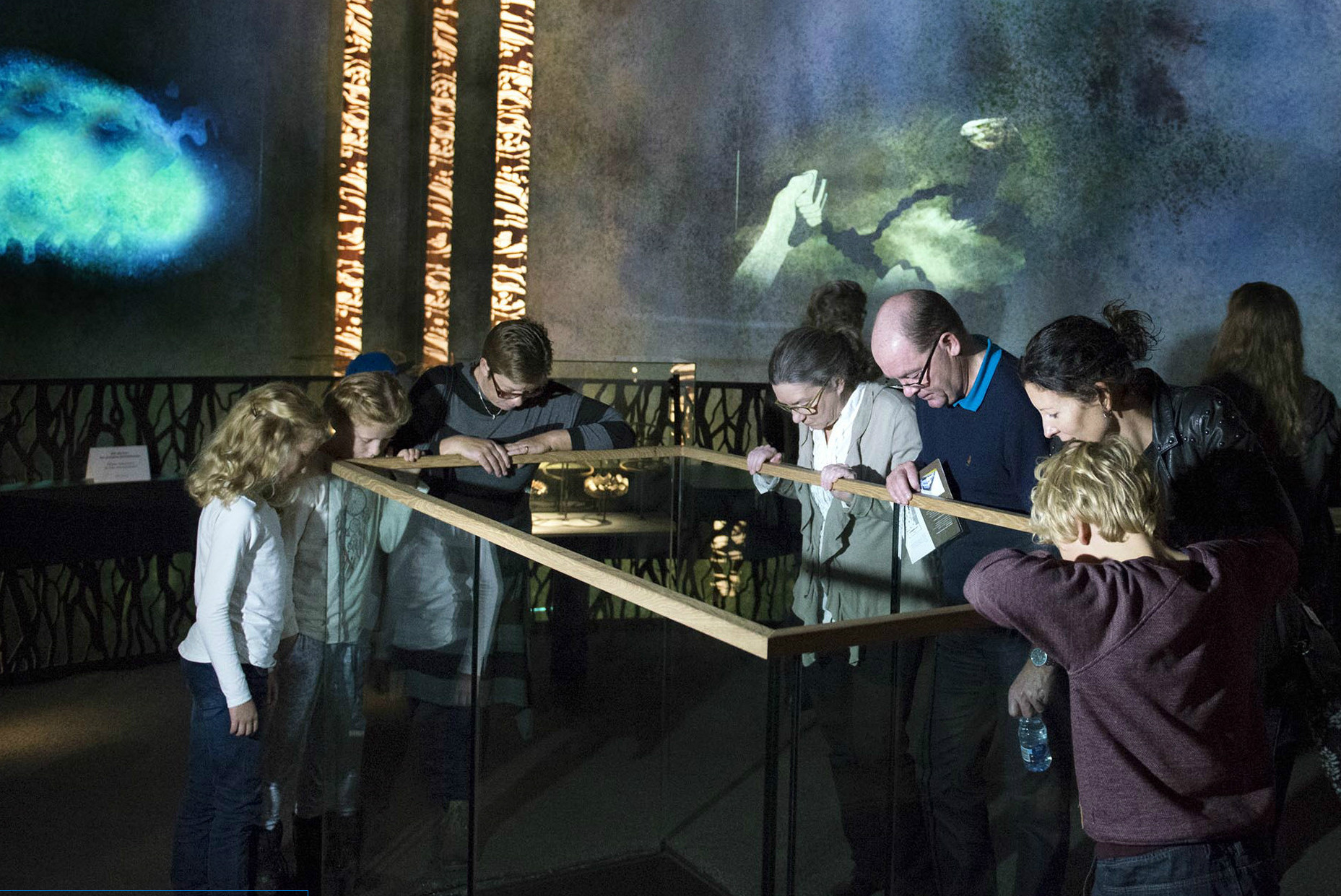
Having previously reported on the fundamental shift in the nature of developments in the projector industry, here Ian McMurray looks at the additional functionality manufacturers are looking to supply through external and embedded software.
It is becoming increasingly commonplace to, in effect, classify projectors as no more than network assets. NEC, for example, provides NaviSet to manage not only projectors but also screens – and Panasonic offers something similar.
“Our Multi Monitoring and Control Software allows management and control of up to 2,048 projectors and professional displays over an intranet network,” says Lucy Meredith, field marketing specialist at Panasonic UK.
That external software can make a significant contribution to usability. Paul Wilson, business manager for projection at Epson UK points out that his company provides utilities to enable projector control from a smart device; to allow any computer on the network to send content to a projector; to support network monitoring; to facilitate interactivity; and to load PowerPoint presentations onto a USB stick to enable computer-less presentations. All are downloadable from Epson’s website.
Embedding software within a projector has, to some extent, obviated the need for external boxes to provide the requisite functionality, as Close noted earlier. And, unsurprisingly, projector manufacturers continue to enhance their products’ capabilities. These enhancements are often provided as free, in-field upgrades – yet another benefit that software brings.
“The most recent function we added to the Barco HDX series software package is GSM communication,” reveals Alexis Skatchkoff, product manager projection at Barco. “That means that any remote installed projector can share information about its status and, in the case of Barco FLEX projectors, the user can even text the projector to increase/decrease brightness.”
“Dual-pipe for 4K sources is one of our latest additions,” says Dave Close, products and applications manager EMEA at Digital Projection. “That can be used for 3D – or for 2D, where legacy cabling or older graphics cards don’t have the bandwidth to carry to full signal down one cable.”
Increasing automation
“You can expect to see increasing levels of automation,” he goes on, “that will reduce or even eliminate the skills required for, say, warping, blending and mapping. Look out too for smart, intuitive user interfaces such as we have become familiar with on our phones.”
“TruLife now includes remote video live thumbnails, which remotely ‘see’, via a web interface, what the signal looks like as received at the projector,” adds Jeevan Vivegananthan, senior director of product management at Christie. “It also includes live video thumbnail visual selection, so rather than just picking which signal to display via an input’s name, you can see a live video thumbnail of all inputs so you can visually select with confidence.”
The world has moved on from ‘merely’ incorporating image manipulation and improvement technology to add a broad array of functionality that enhances usability and connectivity. It doesn’t stop there, however. Software is increasingly making projectors standalone solutions.
An example in point comes from Epson. “When Epson partnered with SMART Technologies to include SMART Notebook Advantage interactive learning software with all of our interactive ultra-short throw projectors,” says Wilson, “this gave schools the opportunity to enhance the learning experience and get the best of both worlds; market-leading projection technology and the world’s leading educational teaching and learning interactive software.”
Simple integration
Gerd Kaiser, product line manager, large venue projectors at NEC Display Solutions Europe points out that his company too has integrated whiteboard functionality and interactivity.
“The complete interactive solution is very quick to install as each element including the whiteboard, the projector and the touch module are aligned along the same axis for simple integration,” he discloses.
In all this talk of what software brings, it’s important not to underestimate the importance of hardware, and especially electronics – as anyone who has (foolishly) ever tried to run Windows 10 on an 80386 with 64kB of memory will testify. Today, though, processing power and memory are virtually unlimited – and relatively inexpensive. The sophistication of software is no longer limited by hardware: it’s limited by the designer’s imagination.
In an era when every projector offers ‘decent’ image quality and enough brightness, the nature of the game is unquestionably changing. Yes, hardware – laser technology, with all its benefits, is an example – has a role. But in the not-too-distant future, that’s how all projectors will be illuminated. Competitive differentiation and advantage in the projection industry – and thus customer buying decisions – will be software based.
And speaking of illumination… How many software engineers does it take to change a light bulb? None: it’s a hardware problem.
Picture: Rógvi N. Johansen
www.barco.com
www.christiedigital.com/emea
www.digitalprojection.co.uk
www.epson.eu
www.nec-display-systems.com
http://business.panasonic.eu
